8 Hidden Greek Museums Just Steps from the...
From olive presses and traditional costumes...
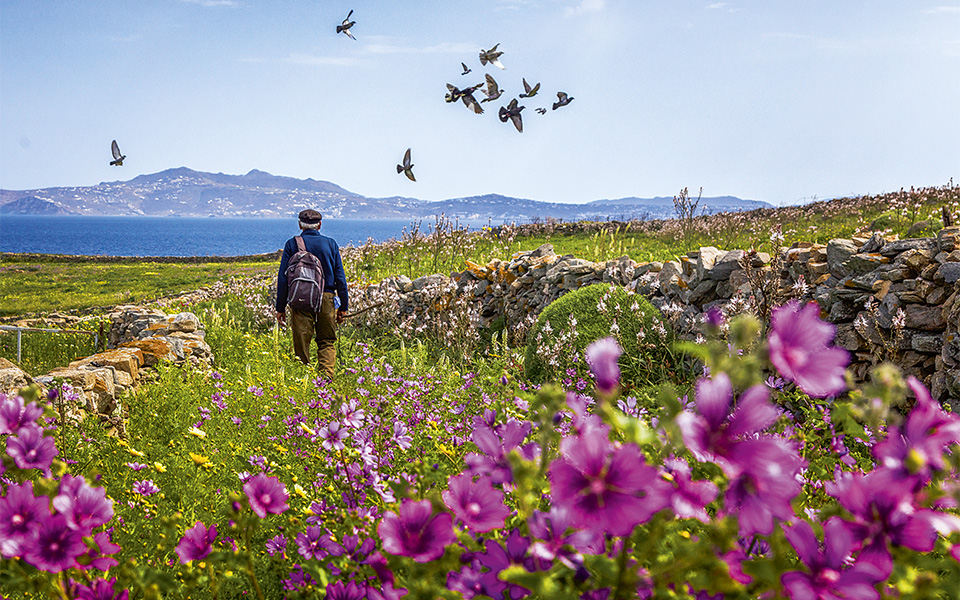
Once a cemetery for ancient Delos, Rineia today could be described as the final resting place for a different way of life: new buildings, vehicles and tourism are all forbidden by law.
© Perikles Merakos
Despite his age, his body is straight as an arrow and his hand, as he clasps it around my arm to help me into the boat, is strong as a vise. His face is toughened from a life of working outdoors, but, at the same time, it’s youthful and wrinkle-free, belying his 85 years. With his eyes fixed on the sea, he takes a pack of pungent Greek cigarettes from his coat pocket and lights up.
Twice a week Lefteris Syrianos, a third-generation farmer, continues to make the trip from his house in the hinterland of Mykonos to his birthplace, the islet of Rineia. He has a hut there and some land, where he grows barley for his sheep and vegetables for his children and grandchildren. He also grazes his animals there in the summer, when Mykonos is so full of tourists even the sheep have nowhere to go.
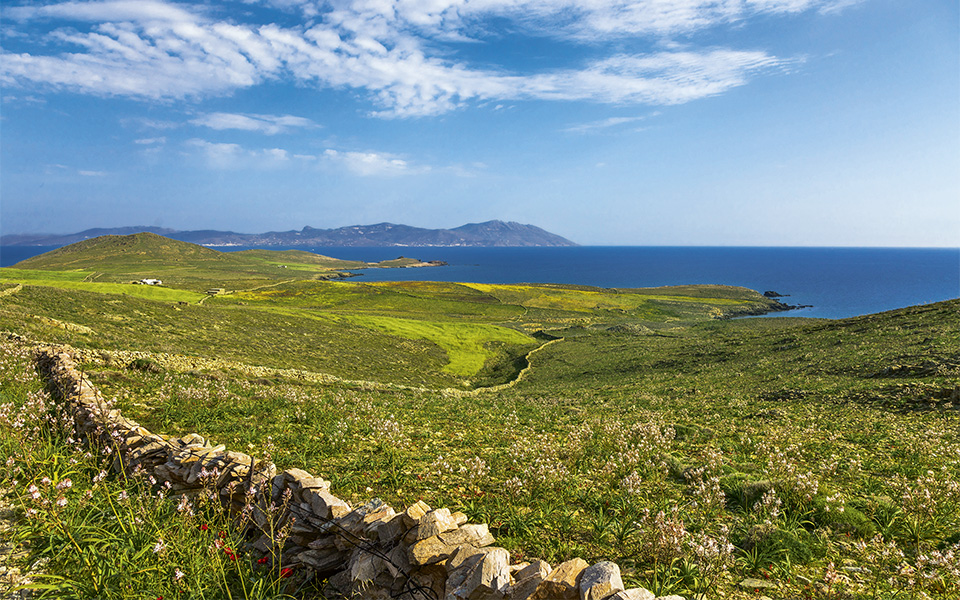
There is little to interrupt the gaze across the unbuilt landscape.
© Perikles Merakos
Rineia is located six nautical miles from the new port, and it takes us about 25 minutes of fair weather cruising to reach Kasari, one of the island’s two harbors. The voidadiko – as the locals call these boats, because they use them not just to transport people but also animals (“voidi” being the Greek word for cattle) – is tied up and the passengers stream out onto the beach to head up to their huts. There are no streets here, just a few dirt roads widened from older footpaths, so there are no cars either. Large deliveries are made by tractor or donkey.
The passengers have about four hours to take care of whatever business they have on Rineia if they want to catch the boat back to Mykonos. I practically pant after Lefteris as he strides up the craggy path between blossoming fields. I stop for a minute to look back at Mykonos, caught in the chokehold of unfettered construction. But Lefteris has pushed on ahead, and so I turn my back on development and re-enter the time capsule that is Rineia. There is little to interrupt the gaze on this unbuilt landscape; I can see the contours of every hill, and the aroma of wildflowers and wild herbs is enough to take my breath away.
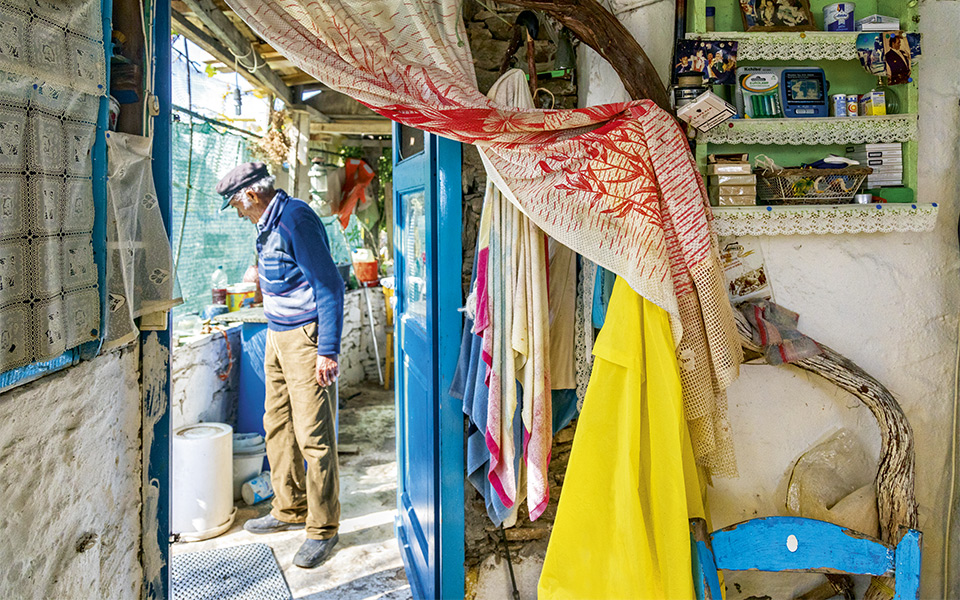
Lefteris Syrianos, 85, is a third-generation shepherd and farmer, born and raised in this house. Today he maintains it as a second home where he stays when tending to his animals and vegetable garden.
© Perikles Merakos
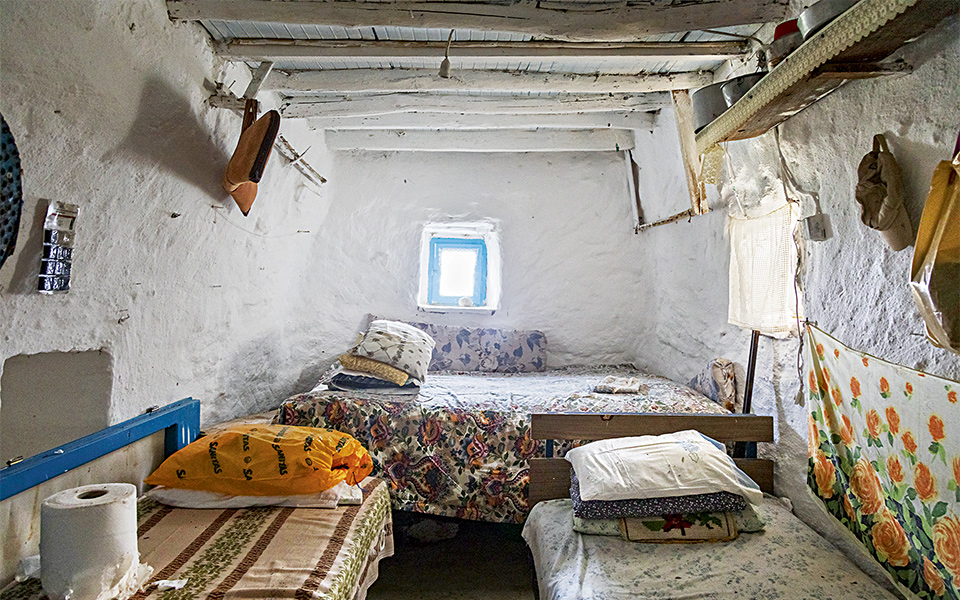
The single-room rural dwellings are well designed for temporary stays and are updated every so often with fresh amenities and comforts.
© Perikles Merakos
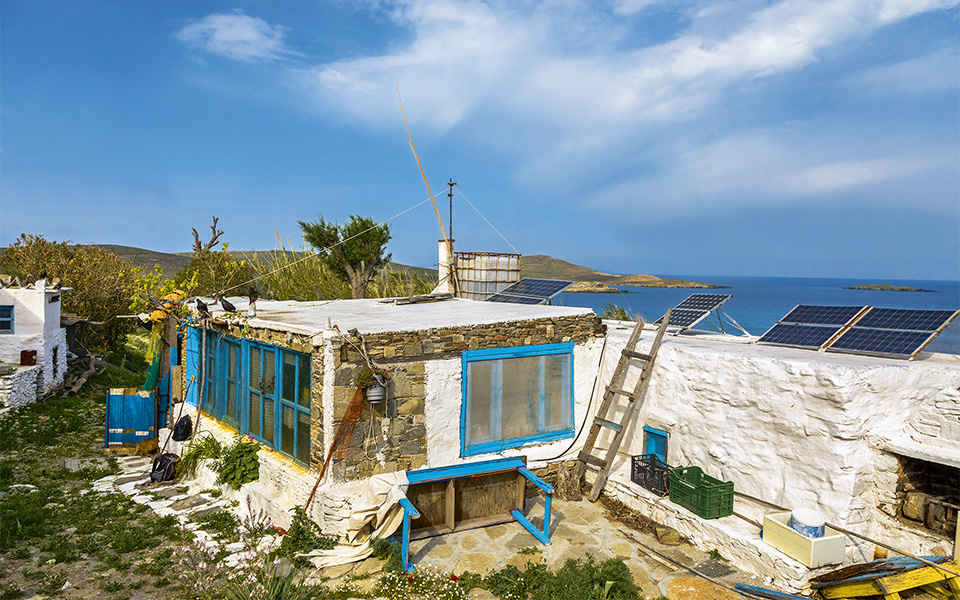
© Perikles Merakos
After a half-hour trek, we reach Lefteris’ family fields. He fills the food trough, makes a quick inspection of the property, does a headcount of his flock and then invites me into his abode. Built of stone, it shows its age but also the care it has received from its owner. There’s a dovecote beside it, a chicken coop further up and a tiny chapel dedicated to Aghios Nicholas. Lefteris makes coffee and we sit on the chapel steps to drink it.
“Big Delos,” as the locals call Rineia, is four times the size of the sacred island and separated from it by a small strait. It consists of two islets joined by a narrow strip of land in the middle. Like Delos, Rineia is a protected archaeological site, but it has not been excavated as systematically. Delos and Rineia came under the jurisdiction of the Municipality of Mykonos in 1844, and limited grazing and farming are allowed on both. There is, however, a plethora of testimony indicating that the Mykonians made use of the islands for at least two centuries before that.
“The land here is fertile and the soil retains moisture longer,” confirms Lefteris. The island’s oldest living resident, he tells me about when his family lived here all year round, about how he and his 10 siblings were all born here, how there was no school for them to attend and how, later, he sent his own children to live on their own in Mykonos, with his wife making the trip over twice a week (weather permitting) to cook and clean for them.
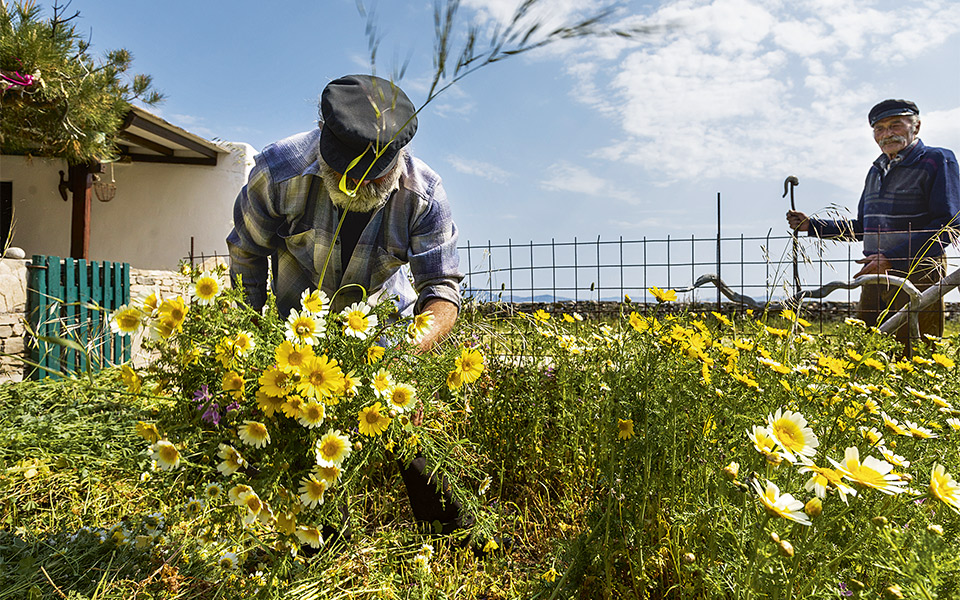
Thodoris Syrianos clears a field of daisies in order to plant his summer crop of fruits and vegetables.
© Perikles Merakos
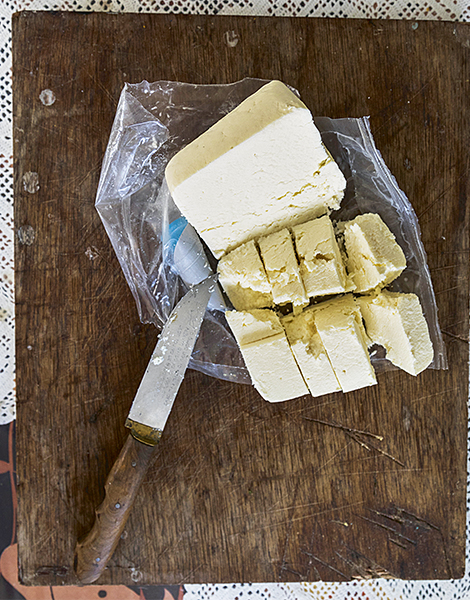
Mykonos’ dairies and many private households produce the famous local “xinotyro” cheese.
© Perikles Merakos
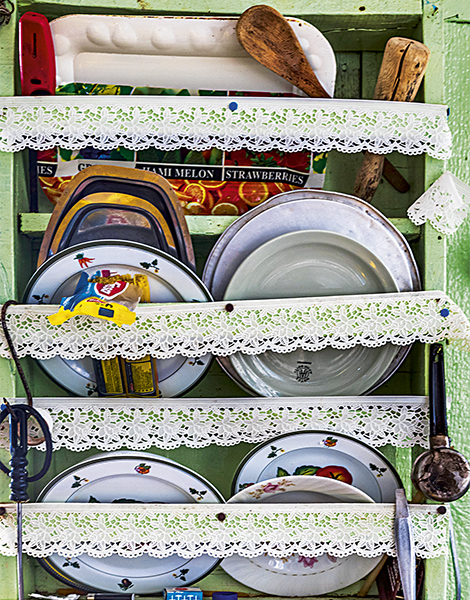
© Perikles Merakos
He returns to the present. There are currently 80 Mykonians living on Rineia on a part-time basis, renting land for a small fee from the Municipality and using it to grow fruit and vegetables, and to graze their animals. The population of livestock on the island consists of 5,000 ewes and of course, of the lambs they produce. There was a time when these small farms and grazing pastures were a family’s only source of income or food; today they are more of a money-saving measure.
Only a handful of Rineia’s “residents” make their livelihood there, yet even those whose main job is related to tourism continue to spend time on their land – a form of relaxation, but also a way to honor family tradition. Many have modernized their stone huts to create more comfortable living quarters, and here and there photovoltaic technology has replaced gas-powered generators. “My mother and father didn’t mind having the odd mouse or lizard in the house, but today we have doors that we keep shut,” says Lefteris.
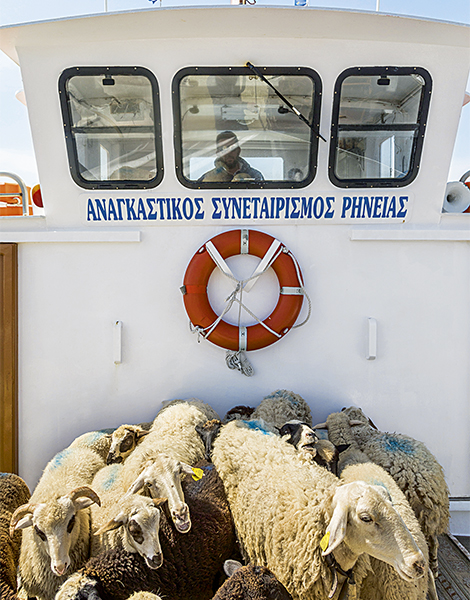
The transportation of people, animals, goods and tools to and from Mykonos is done via the so-called voidadiko (cattle-ship).
© Perikles Merakos
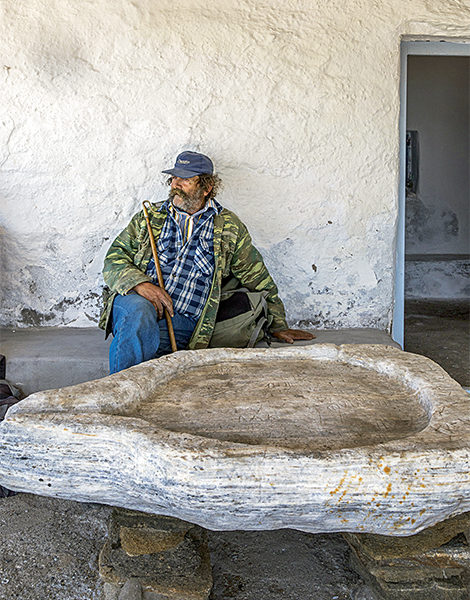
Livestock farmer Spyros Santorinaios is adamant that the island must not lose its rural character.
© Perikles Merakos
He goes on to tell me about Mykonos Farmers, the new dairy farm his son, Giorgos Syrianos, has established. Everyone is hoping that this business will be the key to building a bridge between tourism and the primary sector.
We talk to another Giorgos Syrianos, the representative of Rineia’s livestock farmers, about the next big challenge for the Mykonians: to maintain a bond with the land, to keep something for themselves rather than selling off every last plot for tourism development. This is why the Delians (as the other Mykonians refer to the farmers on Rineia) don’t like to advertise their island. Located such a short distance from Mykonos, they fear that Rineia will one day become an extension of its larger neighbor. “If this becomes a tourist island,” Giorgos says, “it will kill the last vestiges of Mykonos’ farming tradition. We won’t have a single spot left. Mykonos has run out of room.”
We get back into the caique, together with around 30 sheep (on their final journey to the slaughterhouse), and set out for Mykonos, leaving Rineia’s unspoiled landscape in peace and quiet, where it belongs.
From olive presses and traditional costumes...
Step beyond Athens this autumn and...
Discover Greece’s islands in September with...
Francesca Chanioti, a home cook from...